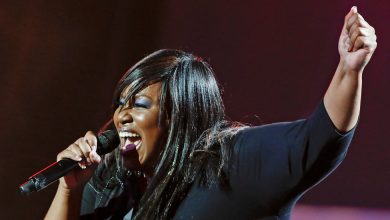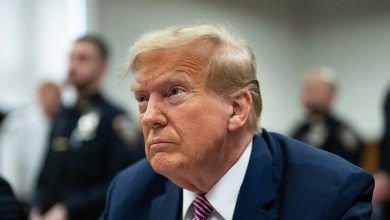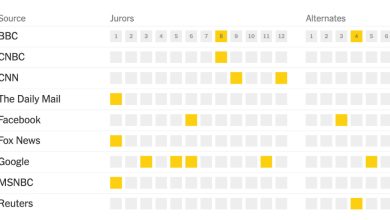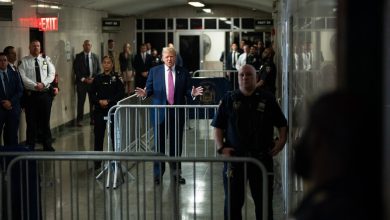Park Seo-Bo, Whose Quiet Paintings Trumpeted Korean Art, Dies at 91
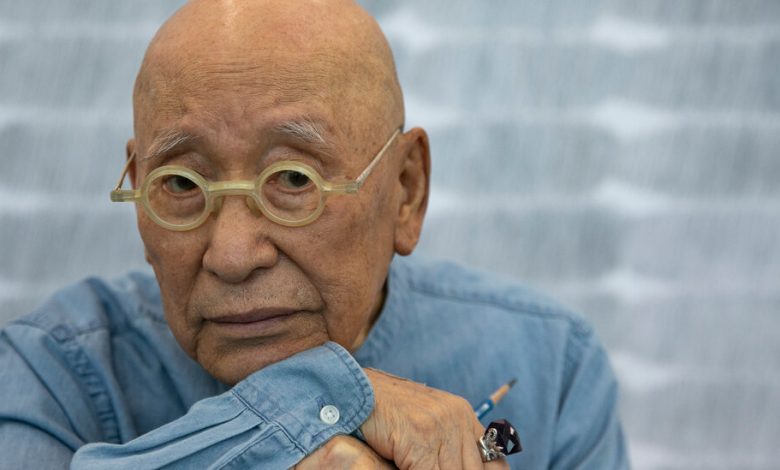
Park Seo-Bo, a painter whose elegantly furrowed monochromes and indefatigable drive made him a pillar of the Korean art world, died on Oct. 14 in Seoul. He was 91.
His son Park Seungho said the cause was cardiopulmonary arrest, adding that his father had chosen to forego treatment for lung cancer.
Park Seo-Bo was primarily known for monochromes, which he made by moving a pencil or stylus through wet oil paint in a wavelike motion; the art critic Baang Ken-Taik advised him to call the works Écritures, from the French word for writing. Mr. Park later adapted the process for Korean mulberry paper, or hanji, which he believed to be more durable.
Like most artists of his generation, Mr. Park had been trained in calligraphy and ink painting as well as in oil, but his approach in the Écritures had less in common with writing or even with conventional painting than it did with conceptual art. By distilling mark making to an essential gesture with no specific meaning, and then repeating that gesture more or less indefinitely, he turned his art practice into a kind of meditation, one that was void, in the Buddhist sense, of both content and form.
The art was also a way of transmuting the intense emotions of South Korea’s civil war, postwar poverty and military dictatorship, as well as what was widely remembered as his own difficult, sometimes quarrelsome personality, into a kind of everyday serenity.
In this respect, Mr. Park was typical of what came to be called the Dansaekhwa group, a loose retrospective term for artists like Mr. Park, Yun Hyong-keun and others who used minimal colors and process-based work to break with Korea’s official artistic establishment of the 1960s and ’70s.
The origins of Écriture, however, were more mundane.
“One day,” he said in an interview this year, “I witnessed my 3-year-old son trying to recreate the writings of his older brother. It was an impossible task for his small, chubby fingers, but he tried again and again with little success. Finally, frustrated, he unleashed a tirade of zigzag patterns all over his notebook with the pencil and admitted defeat. My son’s experience felt close to my own.”
That was in 1967. Mr. Park was unsure of whether his new scribbles were really worthwhile as art until the painter and sculptor Lee Ufan, a friend, saw them in 1971 and persuaded him to debut them at the Muramatsu Gallery in Tokyo. He did, in 1973, and he never looked back, pursuing art making tirelessly.
“Let’s put it this way,” he said in a 2018 interview with Ocula Magazine. “I feel ill at ease when I don’t paint.”
Some of the Écritures he went on to make, interrupted by inset rectangles or lines that resemble horizons, have a faintly figurative subtext; in others, looser strokes conjure up numinous fields of light. Still other paintings, covered in narrow waves from edge to edge, demand a special way of looking, one more attentive to parts than to the whole.
After 2000, bright new colors entered his formerly neutral palette, and in the past decade, as interest in Dansaekhwa has exploded, Mr. Park’s work has become highly sought after.
“One morning,” his daughter, Seungsook, wrote in her 2019 book “Park Seo-Bo’s Art & Life,” “I awoke to find my father had become a high-selling artist. Until then, despite his fame, his works were only famous for remaining unpurchased.”
Park Jaehong was born on Nov. 15, 1931, in Yecheon, South Korea, the third of four children of Nam Kimae and Park Jaehoon. An older brother had died the year he was born.
Mr. Park’s father, a dealer in legal documents, expected his son to become a lawyer. When Jaehong won a national student art competition, his father didn’t acknowledge it. But when he won admission to the fine arts department of Hongik University in Seoul, one of the country’s most prestigious programs, his father agreed to pay a year’s tuition.
Mr. Park made it through less than a semester before civil war broke out. He was captured by the North Korean People’s Army and put to work drawing maps and painting backdrops for a propaganda theater troupe. When, a few months later, Gen. Douglas MacArthur arrived with American troops, Mr. Park escaped in the confusion — only to be impressed into South Korea’s army shortly afterward. His father died around this time.
Mr. Park was released the next year. Determined to continue his education, he found his way to Seoul, where he made money drawing extemporaneous portraits of American servicemen. Continuing on to Busan, where Hongik University had temporarily relocated, he re-enrolled as a student of western painting, studying with Kim Whanki and Lee Jong-Woo. He would sleep under the eaves of a cafe when he couldn’t find a friend to stay with.
But Mr. Park was apprehensive about being drafted again. The day before he graduated, in 1955, he adopted the given name Seo-Bo, bought a fake I.D. and fled. He grew a beard, affected a fedora and spent several months wandering the country before returning to Hongik, where he slept in a janitor’s room and painted in empty studios at night.
Several more years of struggle followed, during which he ran ad hoc private art schools, met and married a younger art student named Yoon Myungsook, worked his way through various painting styles, wrote reviews and feuded with fellow artists, all while avoiding the military police.
During that period he and a friend, Moon Woosik, along with two others, formed a collective in 1956 to publicly challenge the annual state-sponsored National Art Exhibit and show work on their own. The next year, a dozen young artists, including Mr. Moon, formed the Contemporary Fine Artists Association and staged an exhibition — but left Mr. Park out.
After publishing an equivocal review of the show, Mr. Park was invited to join, but did so only after the group agreed to expel Mr. Moon.
Mr. Park quickly became a force in the collective, spearheading regular exhibitions that were widely covered in the press. In 1957, he was the only member whose work was chosen for a show of Korean artists in New York.
In 1961, Mr. Park was offered a UNESCO grant to travel to Paris. Though it meant leaving behind a wife and son he could already hardly support, he jumped at the chance; he took a senior military officer out to dinner, confessed his status and, after a long night of drinking, was granted permission to leave the country.
In Paris, he became acquainted with Art Informel, the gestural European answer to Abstract Expressionism. He also persuaded the organizers of the second Paris Biennale to invite South Korea to participate. This became a pattern for his life: relentless self-promoting and seeking connections.
But he also promoted others whose work he admired, making him a vital link between Korean artists and the world. Eventually, he found his way back to teaching at Hongik, where, as a professor and later as a dean, he gave students practical advice and helped them make connections, too.
In addition to his son, Mr. Park is survived by his wife; another son, Seungjo; and his daughter.
“He was great at making events happen,” Joan Kee, an art history professor at the University of Michigan, said of Mr. Park. “In 1972, there was a big show of modern German art in Seoul, featuring the Zero Group,” an iconoclastic cohort of artists who, emerging in the 1950s, anticipated the Minimalist and Conceptual movements. “Park got together this huge seminar,” she said, “and 200 people showed up. Especially in those days, that was kind of a big deal.”
“Without Park Seo-Bo,” Professor Kee said, “there would not be a modern history of Korean art as we know it.”
